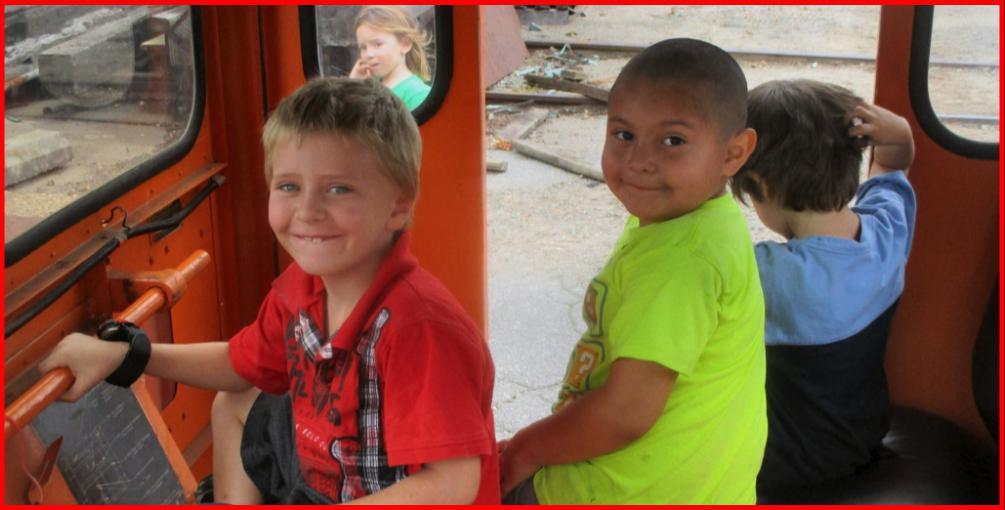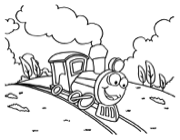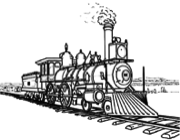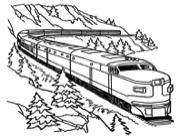KIDS’ CABOOSE

Do You Know How Train Workers Communicate?
| TRAINMAN WHISTLE SIGNALS | |
|---|---|
| • • | [Standing train] Start. |
| • • | [Running train] Stop. |
| • • • | [Standing train] Back up. |
| • • • | Running train has parted |
| • • • • | [Running train] Reduce speed. |
| — | [Running train] Look back for hand signal. |
• MEANS SHORT SOUND
— MEANS LONG SOUND
| ENGINE WHISTLE SIGNALS | |
|---|---|
| • | Apply brakes. Stop. |
| — — | Release brakes. Proceed. |
| — • • • | Trainmen protect rear of train. (Stand with red flag safe distance from train.) |
| — — — — | Trainmen return to train (from West or South). |
| — — — — — | Trainmen return to train (for East or North). |
| • • | Answer to any signal not provided for. |
| • • • | [Stopped train] Backing up or acknowledgement of signal to back up. |
| • • • • | Call for signal. Repeat if signal not understood. |
| — — • — | Grade crossing. |
| —————— | Approaching station or junction (one very long signal). |
| — • • | Warning that a second section of timetabled train is following. |
| — • | [Moving train] Approaching other trains. |
| — • | [Stopped train] Inspect brake system for leaks or sticking. |
| • • • — | Brakeman come forward |
| • • • • • • • | Warning to people or animals on track. |
Have you ever been at a railroad crossing or near a railyard when you heard the train’s horn blow? Did you think the engineer was blowing the horn in long and short "toots" just for fun?
The truth is, the engineer is signalling other railroad workers using a very special language known only to trainmen and people who love railroading, called “whistle signals.” The combinations of long and short blasts on the horn tell others information about the train.
Use these decoders to
learn what the signals
mean, then practice the
signals yourself on your
own train whistle from our gift shop.
To be given by the trainman with a whistle. Engineer and trainman will insure they understand the signals and answers before leaving the station.
HAND SIGNALS FOR TRAIN MOVEMENT
Trainmen can use a hand or flag, moved the same as these lanterns, which would be used at night.
STOP.
Swung at right angles to the track
REDUCE SPEED.
Slight horizontal movement at arm's length at right angle to track
PROCEED.
Raised and lowered vertically
BACK UP.
Swung slowly in a circle at right angle to track
RELEASE
AIR BRAKES.
Held at arm's length above head, when equipment is standing
APPLY
AIR BRAKES.
Swung horizontally above the head when standing
Coloring Pages
1. Click on one of these previews. 2. Print the resulting file. 3. Color the page the way you like!






Learn Railroading Language






